
Virgil Walter Earp was an American lawman. He was both deputy U.S. Marshal and City Marshal of Tombstone, Arizona, when he led his younger brothers Wyatt and Morgan, and Doc Holliday, in a confrontation with outlaw Cowboys at the Gunfight at the O.K. Corral on October 26, 1881. They killed brothers Tom and Frank McLaury and Billy Clanton. All three Earp brothers had been the target of repeated death threats made by the Cowboys who were upset by the Earps' interference in their illegal activities. All four lawmen were charged with murder by Ike Clanton, who had run from the gunfight. During a month-long preliminary hearing, Judge Wells Spicer exonerated the men, concluding they had been performing their duty.

Lethal Weapon 3 is a 1992 American buddy cop action film directed by Richard Donner and written by Jeffrey Boam and Robert Mark Kamen. The sequel to Lethal Weapon 2 (1989), it is the third installment in the Lethal Weapon film series and stars Mel Gibson, Danny Glover, Joe Pesci, Rene Russo, and Stuart Wilson.
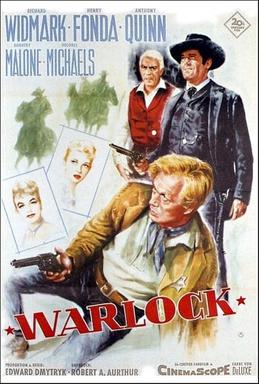
Warlock is a 1959 American Western film produced and directed by Edward Dmytryk starring Richard Widmark, Henry Fonda, Anthony Quinn and Dorothy Malone. The picture is an adaptation of the novel Warlock by American author Oakley Hall. The film is both set and filmed in Utah.
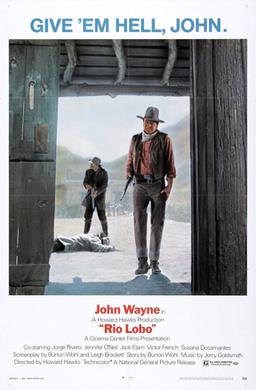
Rio Lobo is a 1970 American Western film directed and produced by Howard Hawks and starring John Wayne, from a screenplay by Burton Wohl and Leigh Brackett. The film was shot in Cuernavaca in the Mexican state of Morelos and in Tucson, Arizona. The musical score was composed by Jerry Goldsmith. It was the third Howard Hawks film to explore the theme of a town sheriff defending his office against belligerent local outlaws: the others were Rio Bravo (1959) and El Dorado (1966), both also starring John Wayne. Rio Lobo was the last film Hawks made.

Henry Newton Brown was an American Old West gunman who played the roles of both lawman and outlaw during his life.

Lonely Are the Brave is a 1962 American black and white Western film adaptation of the Edward Abbey novel The Brave Cowboy directed by David Miller from a screenplay by Dalton Trumbo and starring Kirk Douglas, Gena Rowlands and Walter Matthau.
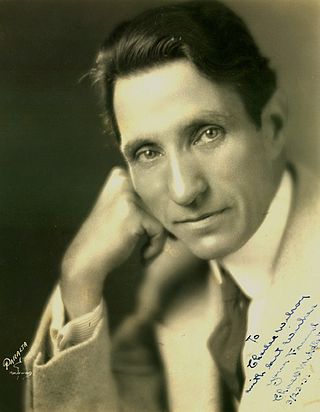
Charles Brown Middleton was an American stage and film actor. During a film career that began at age 46 and lasted almost 30 years, he appeared in nearly 200 films as well as numerous plays. Sometimes credited as Charles B. Middleton, he is perhaps best remembered for his role as the villainous emperor Ming the Merciless in the three Flash Gordon serials made between 1936 and 1940.

Bandolero! is a 1968 American Western film directed by Andrew V. McLaglen and starring James Stewart, Dean Martin, Raquel Welch, George Kennedy, Andrew Prine, Will Geer and Clint Ritchie. The story centers on two brothers on the run from a posse, led by a local sheriff who wants to arrest the runaways and free a hostage that they took along the way. They head into the wrong territory, which is controlled by "Bandoleros".

Law of the West is a 1985 graphic adventure set in the American Old West developed by Accolade for the Commodore 64, Apple II, and Family Computer. It was one of the company's launch titles and the only game from Accolade designed by co-founder Alan Miller. Graphics are by Mimi Doggett and music by Ed Bogas. It was published by American Action in Scandinavia, by U.S. Gold in other parts of Europe, and by Pony Inc. in Japan.
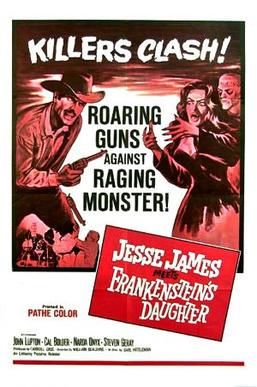
Jesse James Meets Frankenstein's Daughter is a low-budget horror Western film released in 1966, in which a fictionalized version of the real-life western outlaw Jesse James encounters the fictional granddaughter of the famous Dr. Frankenstein. The film was originally released as part of a double feature along with Billy the Kid Versus Dracula in 1966. Both films were shot in eight days at Corriganville Movie Ranch and at Paramount Studios in mid-1965; both were the final feature films of director William Beaudine. The films were produced by television producer Carroll Case for Joseph E. Levine.

Riders of Destiny is a 1933 pre-Code Western musical film starring 26-year-old John Wayne as Singin' Sandy Saunders, the screen's second singing cowboy. It was the first of a series of sixteen Lone Star Westerns made for Monogram Pictures between 1933 and 1935, by Wayne and director Robert N. Bradbury, and the first pairing of Wayne with George "Gabby" Hayes.
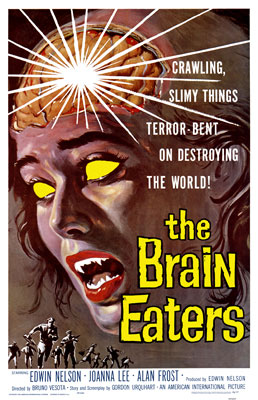
The Brain Eaters is a 1958 independently made American black-and-white science fiction-horror film, produced by Ed Nelson, and directed by Bruno VeSota. The film stars Nelson, Alan Jay Factor, and Joanna Lee and includes a brief appearance by Leonard Nimoy. The Brain Eaters was distributed by American International Pictures as a double feature with either Earth vs. the Spider or Terror from the Year 5000 in different markets.

Cimarron City is an American one-hour Western television series, starring George Montgomery as Matt Rockford and John Smith as Lane Temple, airing on NBC from October 11, 1958, to September 26, 1959. Cimarron City is a boomtown in Logan County, Oklahoma, north of Oklahoma City. Rich in oil and gold, Cimarron City aspires to become the capital of the future state of Oklahoma, to be created in 1907.
The Hot Springs gunfight, also known as the Gunfight at Hot Springs, or the Hot Springs Shootout, was a gunfight on March 16, 1899, between two separate law enforcement agencies that occurred in Hot Springs, Arkansas during the Old West period in the United States.

Martin J. "Mart" Duggan was a gunfighter of the American Old West who, although mostly unknown today and one of the most underrated gunmen of the Old West, was at the time one of the more feared men in the west.
Pat Desmond was a lawman and gunman of the American Old West. He was listed as one of the twelve most underestimated gunmen of the Old West in the book "Deadly Dozen", written by Robert K. DeArment.

The Bounty Hunter is a 1954 American western film directed by Andre DeToth and starring Randolph Scott, Marie Windsor and Dolores Dorn. It was the last of six Randolph Scott westerns with DeToth and the first film to feature a bounty hunter as its hero. It was released by Warner Bros. It was filmed in 3-D but released in standard format, though a 3-D print exists in the Warner archives. Stock footage from the 1952 film Carson City is used at the beginning of the film. Portions of the film were shot on location in California at Red Rock Canyon and the Mojave Desert.

The Canyon Diablo shootout was a gunfight between American lawmen and a pair of bandits that occurred on April 8, 1905, in the present-day ghost town of Canyon Diablo, Arizona. On the night before, two men named William Evans and John Shaw robbed a saloon in Winslow and made off with at least $200 in coins. Two lawmen pursued the bandits and on the following day they encountered each other in Canyon Diablo. A three-second shootout ensued, which was described at the time as "one huge explosion" that resulted in the death of Shaw and the wounding and capture of Evans.

Moving Violation is a 1976 American action film. It was one of several films Roger Corman produced for 20th Century Fox.
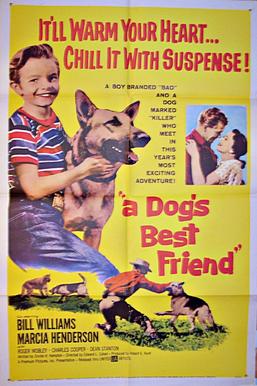
A Dog's Best Friend is a 1959 American Drama Western film directed by Edward L. Cahn and written by Orville H. Hampton. The film stars Bill Williams, Marcia Henderson, Roger Mobley, Roy Engel, Charles Cooper and Harry Dean Stanton. The film was released on December 20, 1959, by United Artists.

















